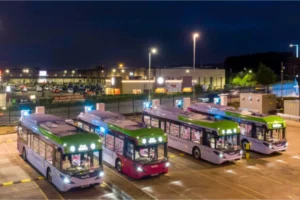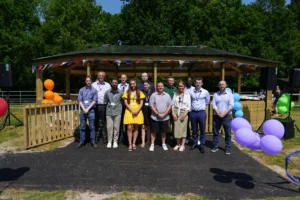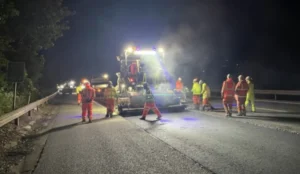An iconic 16-arch viaduct that straddles the River Avon on the West Lothian and Falkirk border has been returned to its former glory thanks to major renovations funded by National Highways’ Historical Railways Estate.
The detailed £2 million programme which included masonry repairs, waterproofing and the installation of 19 bat bricks, six bat tubes and two bat boxes took 18 months to complete and will ensure that the structure, built in the 1850s, will be preserved for many generations to come.
The work follows the renovation of a rare Victorian footbridge crossing the River Teviot near Roxburgh and the announcement of a three-month renovation programme at the listed Boleside footbridge near Galashiels.
HRE civil engineer Colin McNicol said: “We are delighted to be breathing life back into this physical reminder of an important part of railway history in central Scotland and we’re very pleased with how well the work has gone.
“The viaduct had numerous issues that needed attention to ensure it remained safe and in good order and the work that has been completed makes any future plans to reopen the viaduct as an active travel route for pedestrian, cyclist and other users a real possibility.”
Westfield Viaduct is among the 3,100 former railway structures maintained by National Highways Historical Railways Estate (HRE) on behalf of owners, the Department for Transport.
It was constructed between 1854 and 1855 as an extension of the Monkland Railway. This branch line ran from Blackston Junction on the Slamannan Railway to Bathgate to meet the Wilstontown, Morningside and Coltness Railway before turning west to ran to mines around Crofthead before becoming part of the North British Railway in 1865.
The structure features 12 large arches of about 47ft span and two small ones at each end. In total it stretches for 660ft over land and water and stands 60ft from the top of the arch to the riverbed.
Before renovations could begin two rounds of bat surveys, including a summer re-entry survey to ensure bats had not returned to work areas for hibernation, were carried out. Surveys included abseilers under the direction of bat licenced ecologists painstakingly checking dozens of crevices in the masonry with endoscopes, a long thin tube with a camera inside, for signs of bat activities. Drones were also used for further checks.
Any crevices that showed signs of use, such as bat droppings or dark stains on the stones, along with crevices that were too difficult to survey properly, were fitted with excluders which allow bats to leave but not re-enter. All the surveys were completed under a NatureScot bat licence.
Temporary bat boxes, tubes and bricks were installed on areas of the structure where work was not taking place for bats to use safely during the hibernation season. Multiple bat bricks, boxes and tubes were then built into the viaduct as permanent bat roosts.
Other work included extensive vegetation clearance and repairs to all 16 spans, along with north and south parapet repairs and waterproofing work. New cast iron pattress plates, manufactured to match the originals, have also been installed to replace damaged elements and stone repairs were colour matched to the original unweathered material.
(Picture – National Highways)





















